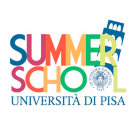Speaker
Description
Archaeometry, i.e. that discipline where science and modern technology are employed to examine archaeological remains, and in general Cultural Heritage, has become so far an important support for archaeologists, restorers and all operators in humanities. Among all the possible issues that can raise in the Cultural Heritage framework, absolute dating and analysis of materials often constitute fundamental questions to be addressed. Nuclear physics, and in particular low voltage electrostatic accelerators, can allow us to solve such questions. In the lecture, we will discuss how Accelerator Mass Spectrometry (AMS) through the measurement of radiocarbon concentration and Ion Beam Analysis (IBA) can help us to date organic remains and to study the composition of artworks, respectively. Theoretical fundamentals and some applications will be shown.

